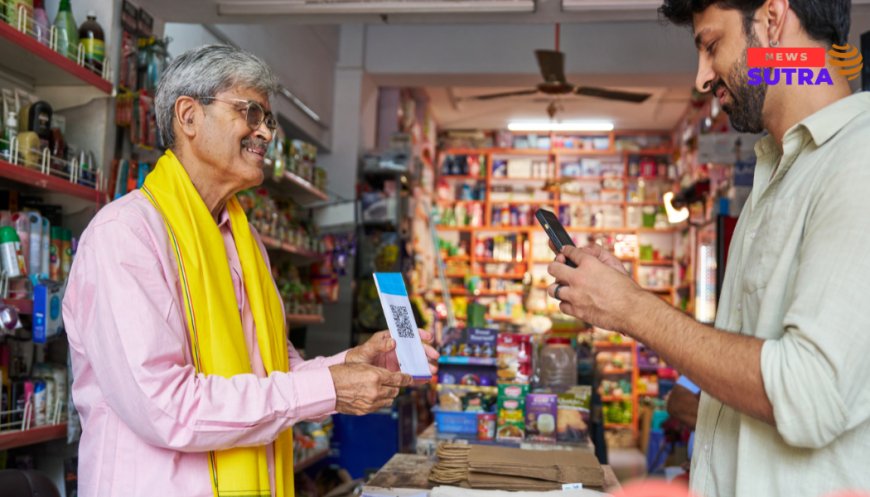UPI Goes Global: How India’s Fintech Diplomacy Is Redefining Digital Payments
India’s UPI is going global. Explore how fintech diplomacy and real-time digital payment infrastructure are reshaping international transactions.

In a bold move toward financial globalization, India's Unified Payments Interface (UPI) is steadily crossing national borders. What started as a domestic digital payments revolution has now transformed into a key instrument of India’s fintech diplomacy, with bilateral partnerships enabling UPI-based payments in countries across Asia, the Middle East, and even Europe.
The rapid internationalization of UPI is a strategic step for India—not just as a tech exporter, but as a leader in real-time, low-cost, interoperable digital finance. With over 11 billion transactions in April 2025 alone, the momentum is undeniable (NPCI Dashboard).
This article explores how UPI is expanding globally, what it means for consumers, businesses, and governments, and the broader implications for India’s digital influence.
What Is UPI and Why Is It Revolutionary?
Launched in 2016 by the National Payments Corporation of India (NPCI), UPI allows seamless, real-time peer-to-peer (P2P) and peer-to-merchant (P2M) payments using just a mobile phone. Its key features—instant settlement, zero merchant fees, and 24/7 availability—have made it the backbone of India’s cashless economy.
Unlike traditional card systems dominated by global players like Visa and Mastercard, UPI is open, interoperable, and built on public infrastructure.
As of 2025:
-
UPI processes over ₹18 lakh crore (~$215 billion) monthly
-
Over 400 banks and apps are integrated
-
India leads globally in digital payment volumes (RBI Annual Report)
How UPI Is Going Global: Countries That Have Signed On
India’s digital diplomacy is being guided by the Ministry of External Affairs (MEA), Reserve Bank of India (RBI), and NPCI’s international arm, NPCI International Payments Limited (NIPL).
Countries Where UPI Has Made Inroads:
-
Singapore
India and Singapore linked UPI with PayNow in 2023. Now, users in both countries can make real-time cross-border transfers using just mobile numbers (MAS and RBI Joint Release). -
UAE
NIPL partnered with Mashreq Bank and Network International, enabling UPI acceptance across merchant POS terminals in Dubai and Abu Dhabi. The move benefits the 3.5 million Indian diaspora in the Gulf. -
France
In collaboration with Lyra Network, UPI is accepted at select locations, including the Eiffel Tower, simplifying transactions for Indian tourists and students. -
Nepal
Nepal became the first foreign country to officially adopt UPI for domestic use through a tie-up with Gateway Payments Service. -
Sri Lanka & Mauritius
UPI and RuPay card services were jointly launched in early 2024, boosting remittances, tourism, and trade (PIB Press Release). -
Bhutan
Bhutan was an early adopter of UPI-based QR payments through Bhutan National Bank, enabling interoperability with Indian users.
The Strategy Behind India’s Fintech Diplomacy
UPI’s internationalization is part of a larger narrative—“India Stack Goes Global.” The goal is to export India’s open digital public infrastructure (DPI), including UPI, Aadhaar, DigiLocker, and eKYC frameworks.
Key Objectives:
-
Empower diaspora communities with seamless, low-cost remittances
-
Strengthen trade and tourism by simplifying payments for Indian travelers abroad
-
Promote Indian fintech startups and banking software in developing nations
-
Challenge global payment monopolies by offering an affordable alternative
This is similar in spirit to China’s Digital Yuan Belt and Road Initiative, but with a stronger emphasis on open-source, democratic technology standards.
Benefits of Global UPI Integration
For Indian Travelers and NRIs
-
Avoid foreign exchange conversion fees
-
Direct payments in INR from Indian bank accounts
-
Better integration with Indian wallets like PhonePe, Google Pay, and Paytm
For Merchants Abroad
-
Tap into India's booming outbound tourism market
-
Accept payments via QR codes without needing foreign POS systems
For Foreign Governments
-
Modernize domestic payment systems using tested, scalable infrastructure
-
Boost financial inclusion and reduce cash dependence
For example, the Digital India Foundation and Modi government's G20 presidency both highlighted UPI as a model for digital public goods at global forums (G20 Digital Economy Working Group).
Industry and Startups Driving the Global Push
The private sector is playing a critical role in UPI’s international expansion. Key players include:
-
NPCI International Payments Limited (NIPL): Leading government-owned vehicle for UPI globalization
-
Pine Labs: Deploying UPI-compatible PoS terminals abroad
-
Razorpay and PayU: Integrating cross-border UPI APIs for Indian exporters and freelancers
-
Zolve and Niyo: Fintechs enabling NRIs and global citizens to use Indian banking services internationally
In addition, Indian startups offering real-time FX solutions, KYC compliance tools, and remittance APIs are now partnering with banks in Africa, Southeast Asia, and the Middle East.
Challenges and Limitations
Despite its promise, UPI’s global expansion faces several headwinds:
-
Currency conversion regulations vary across jurisdictions
-
Data localization and privacy concerns in the EU
-
Integration costs for foreign banks and merchants
-
Limited awareness outside India’s expat communities
To overcome these, India must continue to invest in bilateral fintech treaties, regulatory harmonization, and merchant onboarding programs abroad.
What’s Next for UPI on the World Stage?
Looking ahead, India aims to expand UPI linkages to:
-
UK and US: Especially for diaspora-driven use cases like tuition payments and remittances
-
Southeast Asia: Including Indonesia, Malaysia, and Thailand—key travel and trade corridors
-
Africa: Where mobile money dominates but needs modernization
-
BRICS Nations: To counterbalance SWIFT-based systems with a Global South alternative
As digital sovereignty becomes a geopolitical issue, India’s UPI could emerge as a template for digital infrastructure diplomacy—blending financial innovation with national interest.
Final Thoughts: UPI Is India’s Global Calling Card
UPI’s international journey is about more than payments. It represents India’s vision for an inclusive, low-cost, and interoperable digital future—shared not just with citizens, but with the world.
In an age where digital rails are becoming as critical as physical infrastructure, UPI is enabling India to punch above its weight—not just economically, but diplomatically.
And as more countries sign up to link their payment systems with UPI, one thing is clear: India isn’t just participating in the global fintech revolution—it’s leading it.



















































